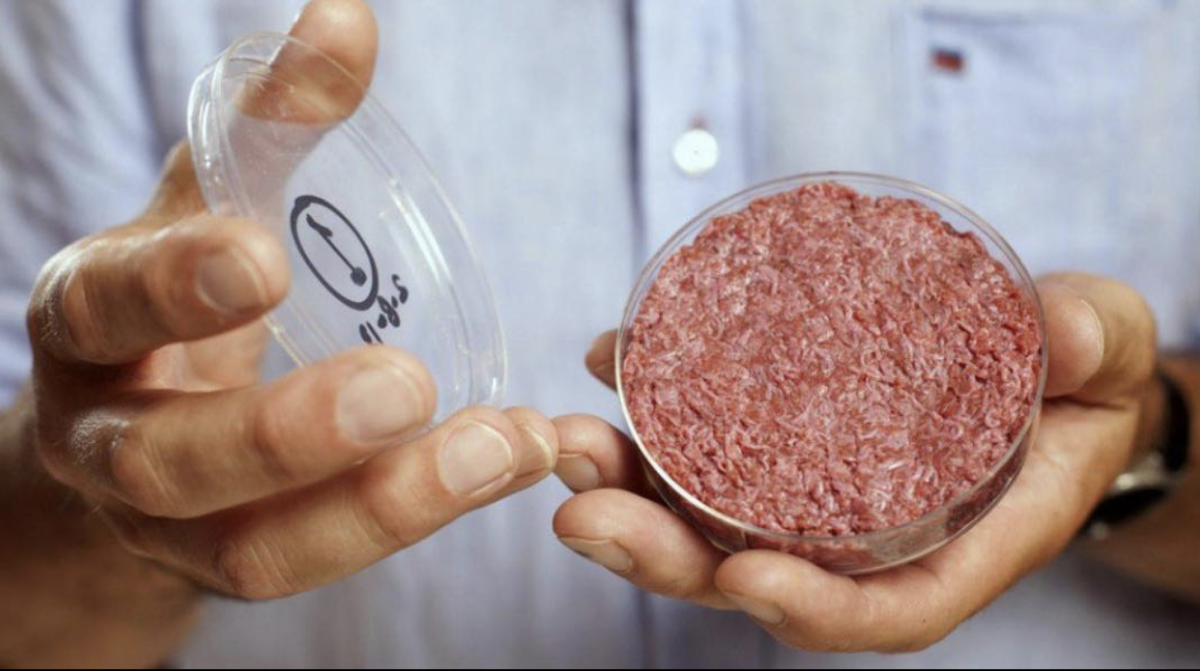About 14.5% of all of the global greenhouse gas emissions come from livestock farming. CO2, methane and nitrous oxide — the three gases that contribute most to global warming — are released during digestive processes for cattle, sheep and goats. Processing and transporting animals, storing manure and machinery usage also add to greenhouse gas buildup. Clearing land for cattle ranching is a major culprit of deforestation.
When the waiter delivers your sizzling, seasoned 8-ounce sirloin, you’re not likely to let the broad array of environmental ramifications dampen your satisfaction. You’ll still sink your teeth right in. But if you could reap the same pleasure more sustainably, wouldn’t you?
Many opponents of lab-grown meat are weary of consuming something made in a lab. It’s not “natural,” so we’re not meant to put it in our bodies, right?
What these skeptics likely fail to consider is that our meat hasn’t been “natural” for quite some time. Corporations like Tyson and Perdue already use technology to enhance every aspect of meat production — including the animals themselves. Today’s chicken is about three times the size of the birds we ate in the 1950s, and that their growth was not natural. Selective breeding and other forms of biotechnology have transformed the animals we consume.
Lab-grown meat, also referred to as cell-cultured meat, won’t be commercially viable for a long time. But several companies, including Upside Foods and Good Meat, have received Food and Drug Administration approval for their cell-based product.
If you look up pictures of lab-grown meat, you likely won’t notice a difference from the traditional product. That’s because it still is meat, despite the agricultural groups lobbying for legislators to safeguard the term.
Cells are taken from an animal and fed with water, salt and nutrients so they can grow and multiply. Once harvested, those cells become minced meat and can be formed into patties or sausages. So, it’s not vegan; the product comes from animals, but they don’t need to be slaughtered for their cells.
The argument against referring to lab-grown burgers as “meat” is really rooted in fear of outcompeting traditional meat production companies. In fact, that’s where a lot of opposition against the product itself comes from. But cattle and poultry associations shouldn’t be panicking: it’s going to be years before lab-produced meat hits consumer shelves. When it does, sure, plenty of people will (hopefully) be willing to make the switch. Humans have been overconsuming meat and will continue to, so there will be enough demand to satisfy both markets.
Back in the 1960’s, an average of 23.1 kilograms of meat per person were consumed. By 2019, that number increased to 43.2. A large portion of meat-eaters will likely not consider switching to the lab-grown product. So, for the U.S. especially, the demand for cattle and poultry products will remain high.
The goal is for that demand to decrease somewhat. No one wants traditional meat to be completely replaced with the cell-cultured product, but the positive implications of a reduction in cattle and poultry production are valuable for the prospect of a more sustainable environmental future.
Another argument against introducing lab-grown meat into the consumer market is that the environmental benefits are under-researched and could be unfounded. A not-yet peer-reviewed study found that cultivated meat’s environmental impact will be higher than that of retail beef if scientists continue to purify growth media in the same way as they currently are.
But companies are already looking for solutions to make the new technology more efficient. And, might I re-emphasize that the product will likely not be available to consumers for years. There is time to iron out the kinks.
The same study found that cultured meat’s global warming potential could be between 80% lower to 26% above that of conventional beef production. That’s clearly a massive range, but if companies can figure out how to gravitate toward the lower projection, the environment could see significantly positive impacts.
I’m not a scientist and I don’t know much of the reasoning behind these projections, or exactly how feasible this reduction would be. But I do know that the current meat production tactics do not support a sustainable future. If something isn’t working, change should be initiated. If the experts decide that lab-grown meat can’t reduce greenhouse gas emissions after all, then at least valuable science was learned. At least an attempts are being made.
Lindsey Osit, FCRH ’24, is a journalism major from South Windsor, Conn.










































































































































































































Fedupwiththebullshit • May 20, 2024 at 2:16 pm
Let’s first reduce greenhouse gasses created by private jets and factories. Then talk to me about eating unnatural franken food and bugs. We could destroy every single land animal on earth, then a volcano erupts and sets us back to start. Cow farts are not the problem. Tell China to clean up their environment!
Dr Holmes • May 20, 2024 at 8:49 am
HeLa cells are durable and prolific, allowing for extensive applications in scientific study. The line is derived from cervical cancer cells taken on 8 February 1951, from Henrietta Lacks, a 31-year-old African American mother of five, after whom the line is named. Lacks died of cancer on 4 October 1951. The only cells that can reproduce outside of a host. This is how the protein is replicated as “lab-grown”. I’m sorry, they need to find a different way before I eat artificial meat.